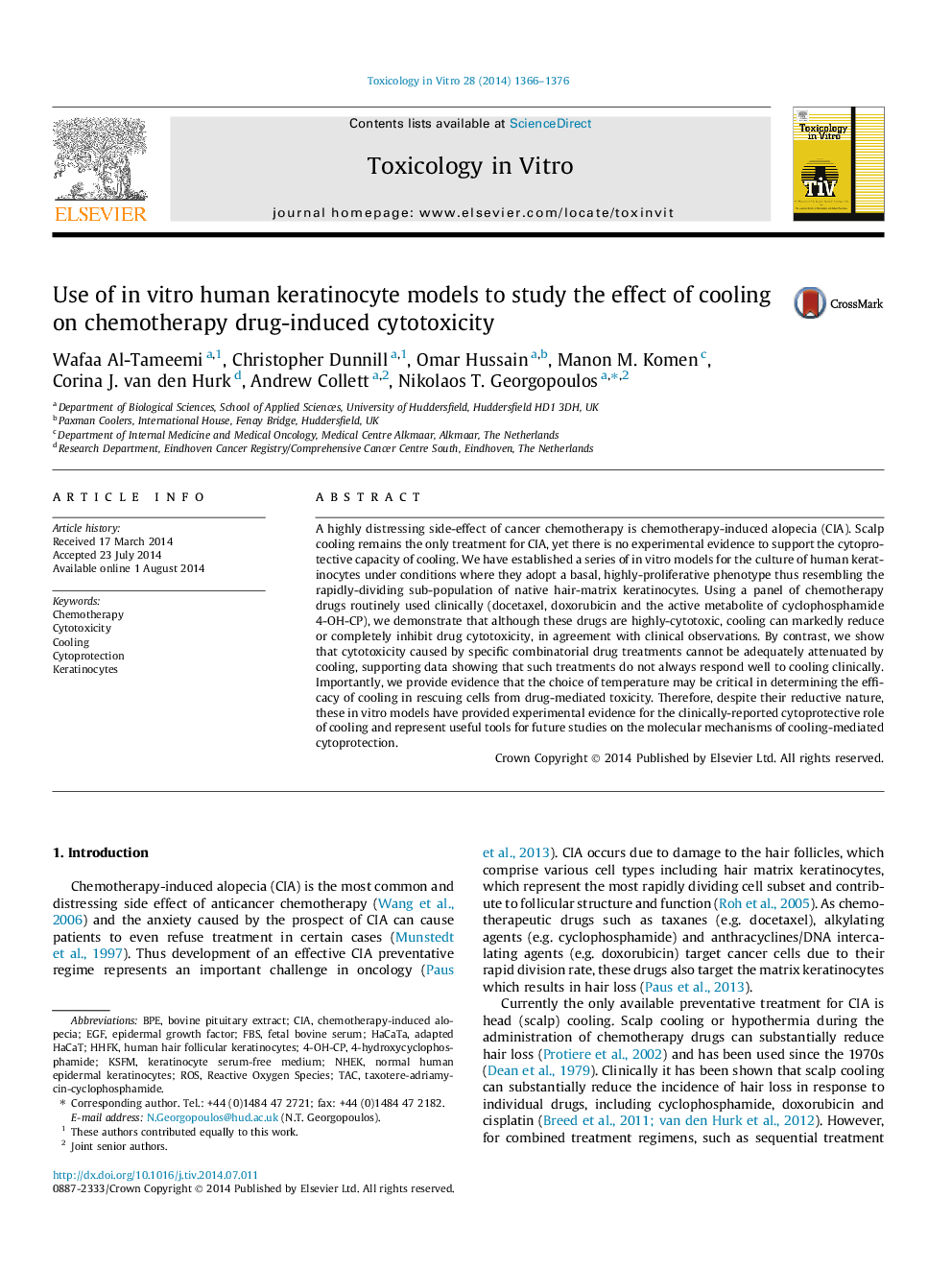| Article ID | Journal | Published Year | Pages | File Type |
|---|---|---|---|---|
| 5861850 | Toxicology in Vitro | 2014 | 11 Pages |
Abstract
A highly distressing side-effect of cancer chemotherapy is chemotherapy-induced alopecia (CIA). Scalp cooling remains the only treatment for CIA, yet there is no experimental evidence to support the cytoprotective capacity of cooling. We have established a series of in vitro models for the culture of human keratinocytes under conditions where they adopt a basal, highly-proliferative phenotype thus resembling the rapidly-dividing sub-population of native hair-matrix keratinocytes. Using a panel of chemotherapy drugs routinely used clinically (docetaxel, doxorubicin and the active metabolite of cyclophosphamide 4-OH-CP), we demonstrate that although these drugs are highly-cytotoxic, cooling can markedly reduce or completely inhibit drug cytotoxicity, in agreement with clinical observations. By contrast, we show that cytotoxicity caused by specific combinatorial drug treatments cannot be adequately attenuated by cooling, supporting data showing that such treatments do not always respond well to cooling clinically. Importantly, we provide evidence that the choice of temperature may be critical in determining the efficacy of cooling in rescuing cells from drug-mediated toxicity. Therefore, despite their reductive nature, these in vitro models have provided experimental evidence for the clinically-reported cytoprotective role of cooling and represent useful tools for future studies on the molecular mechanisms of cooling-mediated cytoprotection.
Keywords
Related Topics
Life Sciences
Environmental Science
Health, Toxicology and Mutagenesis
Authors
Wafaa Al-Tameemi, Christopher Dunnill, Omar Hussain, Manon M. Komen, Corina J. van den Hurk, Andrew Collett, Nikolaos T. Georgopoulos,
